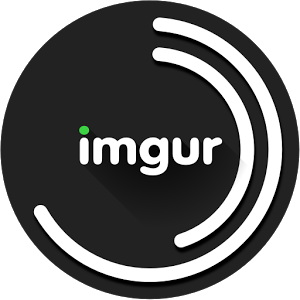| ANNOUNCING THE WINNERS OF THE 10th ANNUAL PACE PITCH CONTEST | |||||||||
|
|||||||||
The Tenth Annual Pace Pitch Contest
Presented by
The Entrepreneurship Lab
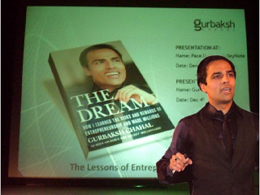
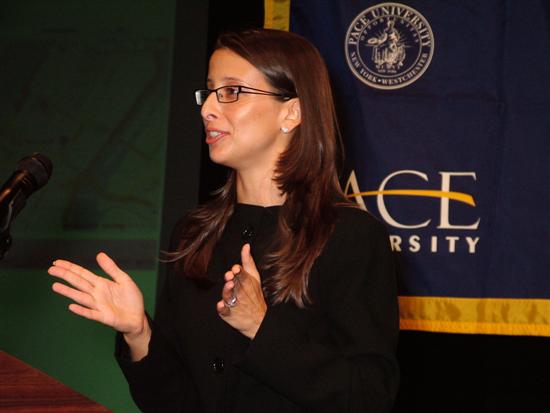
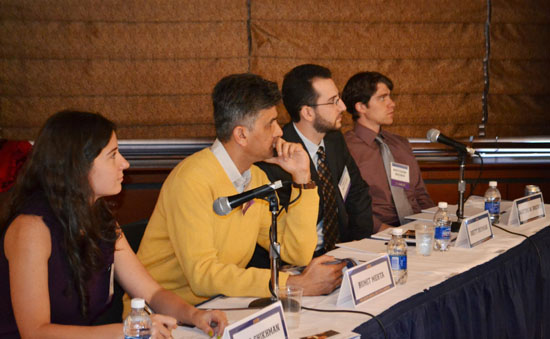
Come hear seven Finalists pitch their new business ideas at the Tenth Annual Pace Pitch Contest, which will be held on April 17th 2014, from 5:30 pm to 8:30 pm in the Bianco Room, One Pace Plaza, New York, NY 10038
KEYNOTE SPEAKER

Kane Sarhan
Co-Founder, Enstitute
|
For Audience Registration The Tenth Annual Pace Pitch Contest |
- 5:30 - 6:00 Registration and Networking
- 6:00 - 6:15 Keynote Speaker
- 6:15 - 7:15 Finalists make their Pitch
- 7:15 - 7:30 Break (Judging Panel selects the winning pitches in private)
- 7:30 - 8:30 Awards Ceremony and Networking
Each individual/team will have 3 minutes to make a pitch and may use up to 5 PowerPoint® slides. The pitch must be an original concept, created by the presenter(s).
Here's How to Enter
- 1. At least one member of your team should meet one of the following two criteria:
- Full or part-time student currently enrolled in Pace University
- Recent Pace University graduate (graduated within the past 18 months)
AND if you have already launched the venture, it must have been in business for less than 2 years and received less than $100,000 in funding.
- 2. Register online. Each member of the team must complete the Intent to Compete Registration Form at the Tenth Annual Pace Pitch Contest Web site elab.nyc/pitch.
- Deadline - 5:00 PM EST on Monday March 31, 2014
- 3. Submit a biography. Each biography (if competing as a team, each member must submit a biography) MUST be a minimum of 100 words and a maximum of 200 words. Please be sure to indicate your status as a student (college/university and school, degree, major, full or part-time status, and expected year of graduation) or as a recent graduate (college/university and school, degree, major, and date of graduation).*
- Deadline - 5:00 PM EST on Monday March 31, 2014
- 4. Submit an Executive Summary. You should prepare a ONE PAGE Executive Summary to be used on the Pace Pitch Web site and in the printed program.*
Deadline - 5:00 pm EST on Monday March 31, 2014.
- 5. Finalist Announcement. The names of the finalists will be announced on Monday April 7, 2014.
- 6. Submit a photo. If selected as a Finalist or alternate, you must submit a digital photograph (approximately 100 KB - 1 MB in JPEG format) to be used on the Pace Pitch Web site and in the printed program.*
- Deadline - 5:00 pm EST on Friday April 11, 2014.
- 7. Submit a PowerPoint® presentation. If selected as a Finalist or alternate, you may submit up to 5 PowerPoint® slides to be used with your pitch (the 5 slide maximum includes a title slide and none of the slides may include external hyperlinks, embedded video, or transitions that 'effectively create' more than 5 distinct slide images). PowerPoint slides are not required and may not be used if not received by the deadline. Presentations in other formats will not be accepted.*
- Deadline - 5:00 pm EST on Monday April 14, 2014.
- 8. Make Your Pitch! The finalist/alternate contestant must arrive at the One Pace Plaza, Anielo Bianco Room(formerly Multipurpose Room), New York, NY. 10038 by 5:00 pm EST on Thursday April 17, 2014.
* All documents must be sent by e-mail to Nikhil Kalyankar, Associate Director, The Entrepreneurship Lab, at nkalyankar@pace.edu
Here's How the Pace Pitch Contest Works:
On Thursday, April 17, 2014, finalists will make their pitches to a panel of judges in front of an enthusiastic audience. There is a strict time limit of three minutes for all pitches. Contestants will present in alphabetical order. After each pitch, the judges may ask a number of questions. All answers must be kept to less than one minute. Immediately after the pitches have been made, the judging panel will decide on one winner from each category based on the Guidelines and Judging Criteria. The Pace Pitch Contest has proven to be an exciting, educational, and fun event. We hope you will enjoy the event and find it valuable.
If you have any questions, please feel free to contact Professor Bruce Bachenheimer, Program Director of Entrepreneurship @ Lubin, at bbachenheimer@pace.edu or Nikhil Kalyankar, Associate Director, The Entrepreneurship Lab at nkalyankar@pace.edu.
Good luck!
New Business Concepts Pitch Guidelines | Social Ventures Pitch Guidelines | Ten Questions That You Should Try To Answer
New Business Concepts will be evaluated on the following judging criteria.
- 1. Business Description: Details of the venture and what it does.
- How well was the concept explained?
- How reasonable, sustainable, and scalable is the new concept?
- 2. Market Analysis: Characteristics of the market and description of its customers.
- Is there a genuine need for the product or service?
- How well was the target market defined?
- What is the size and growth of the market?
- What is the consumers' willingness to pay for the product/service?
- 3. Product or Service Analysis: The specifics of the product or service.
- Is the description clear?
- Is the product feasible?
- How easily it can be duplicated?
- Is there a presence of potential substitutes for the product?
- 4. Competition: Identify current and potential competitors.
- Have the current and potential competitors, competitive response, and analysis of strengths and weaknesses been adequately defined?
- 5. Marketing Strategy: How sales will be achieved.
- How realistically defined is the marketing plan?
- Does the plan adequately address price, product, place, and promotion?
- Are resources sufficiently allocated for marketing?
- 6. Operations: How the product or service will be produced and delivered.
- What is the likelihood of securing resources required for production?
- Is there an ability to operate competitively and grow?
- 7. Management: An assessment of the entrepreneur(s) and team.
- Does the team exhibit the experience and skills required for operation?
- What is the depth and breadth of the team's capabilities?
- Does the team demonstrate the ability to grow with the organization and attract new talent?
- 8. Finances: An overview of the required resources and economics of the venture.
- How compelling is the business model?
- Have the resources required for the venture been addressed?
- Has the team clearly and adequately presented a breakeven analysis?
- How reasonable are the financial projections?
- Are there prospects for long-term profitability?
- 9. Investment Proposal: The terms and conditions offered to investors.
- Did the entrepreneurial team explain funding?
- Were offerings to investors and anticipated returns clearly explained?
- Did the team calculate a realistic valuation?
- How feasible is the exit strategy?
- 10. Presentation: Overall effectiveness of the actual presentation.
- Did the presenter(s) engage the audience and hold their attention?
- Did the presenter(s) appear to speak with confidence authority?
- Were visual aids (i.e. PowerPoint® slides) clear and valuable?
- Was the pitch exciting and compelling?
- How efficiently did the team allot their time?
Social Ventures will be evaluated on the following judging criteria.
- 1. Assessing the Need: An analysis of the social issue and its affected population.
- Does the proposed venture address a significant and critical social problem?
- 2. Well-defined Target: Characteristics of the market and targeted population.
- Does the proposed venture adequately describe the problem it hopes to address and have defined parameters within which it plans to operate?
- 3. Management: An assessment of the entrepreneur(s) and team.
- Does the entrepreneurial team possess the skills and experience required to translate the plan into action?
- Can they demonstrated the passion, commitment, and perseverance required to overcome inevitable obstacles?
- Is the team comprised of individuals committed to ethical standards?
- 4. Creativity: A demonstration that the proposed solution displays a unique approach.
- Does the proposal approach the social problem in an innovative, exciting, and dynamic way?
- 5. Feasibility: A demonstration that the venture can be successfully implemented.
- Does the initiative aspire towards clear, realistic and achievable goals, while thinking big?
- Can it be implemented effectively?
- 6. Planning: A clear and well-defined strategy to achieve objectives and goals.
- Are there clear and coherent schedules, milestones, objectives, and financial plans?
- 7. Operations: How the product or service will be physically produced and distributed.
- Has adequate attention been given to the way in which the product or service is to be produced and/or delivered?
- Do they have, or can likely secure, the resources required for production?
- Will they be able to operate competitively and grow?
- 8. Sustainability: Long-term prospects for viability and success.
- Does the proposed venture include adequate strategies for fundraising and income generation?
- Does it consider the different dimensions of financial and social sustainability in a conscientious manner?
- 9. Social Impact: The value that the new venture will bring to society.
- How will the implementation of this social venture benefit the community and the multiple stakeholders involved?
- Is there the potential for significant social impact and engagement of the broader community?
- 10. Presentation: Overall effectiveness of the actual presentation.
- Did the presenter(s) engage the audience and hold their attention?
- Did the presenter(s) appear to speak with confidence authority?
- Were visual aids (i.e. PowerPoint® slides) clear and valuable?
- Was the pitch exciting and compelling?
- How efficiently did the team allot their time?
* While there is some debate regarding the precise definition of a social venture, and what exactly differentiates it from a traditional for profit business, the Selection Committee and Judging Panel will use the following criteria:
- PRIMARY MISSION - is the organization's primary purpose to serve its owners (New Business Concept) or society (Social Venture)
- PRIMARY MEASURE OF SUCCESS - does the organization measure its success primarily by profitability (New Business Concept) or positive social change (Social Venture)
Whether pitching a New Business Concept or a Social Venture, try to address the following ten big questions as completely as possible. Remember, you should not simply talk about a general idea (those are "a dime a dozen"), rather, try to present a concise concept with a cleareconomic model, convincing everyone that you can actually make it happen.
- 1. What's the PROBLEM?
- 2. What's your SOLUTION?
- 3. How large is the MARKET?
- 4. Who is the COMPETITION?
- 5. What makes you so SPECIAL?
- 6. What's your ECONOMIC MODEL?
- 7. How exactly will you achieve SALES?
- 8. Have you assembled a qualified TEAM?
- 9. How will you secure required RESOURCES?
- 10. What are you proposing for an INVESTMENT?
Suggested reading: The Art of the Start by Guy Kawasaki (Penguin 2004), especially Chapter 3, "The Art of Pitching"
Bal Agrawal, CEO, LifeWorx, Inc.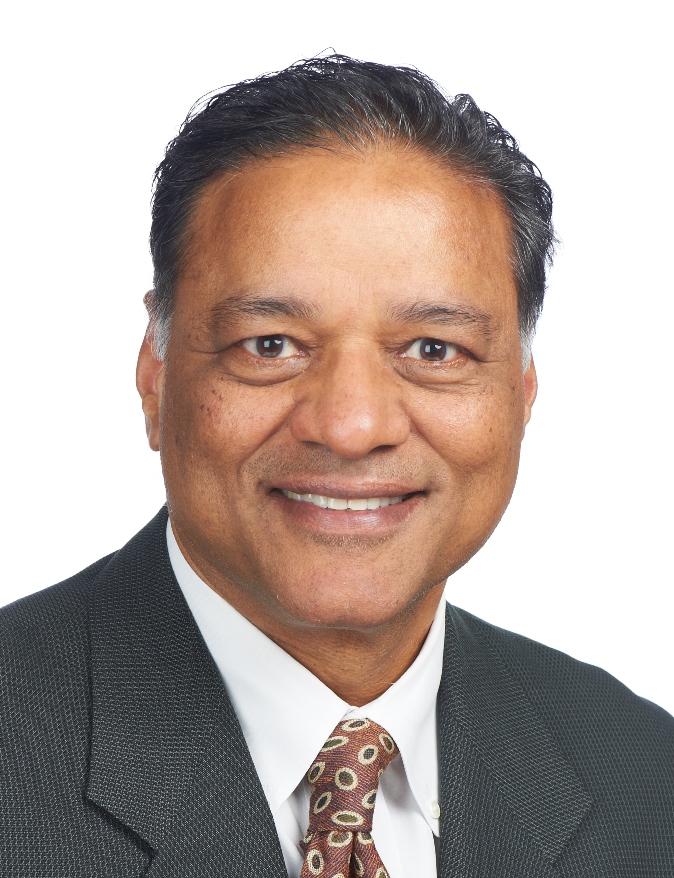
Bal Agrawal, CEO, LifeWorx, Inc; founded the company where trust and skill in domestic help is assured. From his own experiences and life challenges, he recognized that help at home is random and does not need to be such! LifeWorx provide Nannies, Chefs, Housekeepers, Eldercare and other in-home services to make client’s life simple and home relaxing. Building exceptional organization, target Marketing, investing in technology and growing LifeWorx is Bal’s key focus.
Previously, Bal worked for Praxair for 24 years in Marketing, Sales, Business Development, Strategy and General Management. Bal graduated from IIT, Mumbai with Distinction in Engineering. He received Sc.D from MIT in Material Science with minor in Finance.
Ellen Carey, Manager, Global Impact Investing Network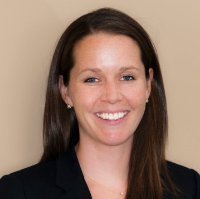
Ellen is responsible for developing IRIS, the catalog of generally accepted metrics used to measure social, environmental, and financial performance of organizations. Prior to joining the GIIN, Ellen worked as an international development consultant for PricewaterhouseCoopers focusing on impact measurement and developing the private sector in emerging economies. She's worked on a variety of projects ranging from global challenge funds focused on supporting inclusive businesses to investment climate programs in conflict affected countries. She has on-the-ground experience working with entrepreneurs, investors, and governments in a variety of countries including Tanzania, Afghanistan, and Haiti. Ellen holds a BA in Applied Math and Economics and a MSc in Economics, both from Johns Hopkins University.
Mary Howard, Principal, designtechnologies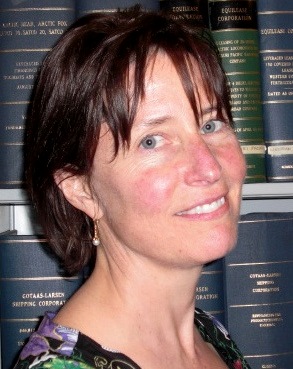
Mary Howard is founder of Design Technologies creater and manager of the ELab NYC program, a competitive entry business training program for research scientists and engineers in life sciences field. Design Technologies also created the TechLaunch training program for the state of NJ for software and mobile app startups and Clean Energy Association's SBIR training program for federally funded startups working to achieve Phase II funding awards. Mary is founder of startups in imaging and CAD software, event promotion software, food service and product design. She is a surfcaster and spends her free time on the water.
Anna Khan, Venture Capitalist, Bessemer Venture Partners
 Anna Khan is a venture capitalist at Bessemer Venture Partners (BVP), a $1.6B fund that invests in seed and growth stage companies. Prior to BVP, Anna was Chief of Staff at 4INFO, a mobile advertising startup where she focused on product and business development. Anna also co-founded Palindrome Advisors, a nonprofit advisory firm focused on startup mentorship, board matching, and nonprofit education for tech executives. Anna has previously worked at Goldman Sachs and Morgan Stanley and holds a BA with honors in Political Science, English Literature, and Science, Technology and Society from Stanford University. She is a lifetime member of the Cap & Gown Academic Honor Society and was President of Stanford Women in Business, one of the largest student groups at Stanford. Currently, Anna serves on the Social Investment Council of Echoing Green and maintains a blog at www.annakhan.com
Anna Khan is a venture capitalist at Bessemer Venture Partners (BVP), a $1.6B fund that invests in seed and growth stage companies. Prior to BVP, Anna was Chief of Staff at 4INFO, a mobile advertising startup where she focused on product and business development. Anna also co-founded Palindrome Advisors, a nonprofit advisory firm focused on startup mentorship, board matching, and nonprofit education for tech executives. Anna has previously worked at Goldman Sachs and Morgan Stanley and holds a BA with honors in Political Science, English Literature, and Science, Technology and Society from Stanford University. She is a lifetime member of the Cap & Gown Academic Honor Society and was President of Stanford Women in Business, one of the largest student groups at Stanford. Currently, Anna serves on the Social Investment Council of Echoing Green and maintains a blog at www.annakhan.com
WELCOME
Neil S. Braun, Dean, Lubin School of Business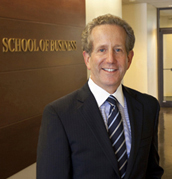
Neil S. Braun has served as the Dean of Pace University's Lubin School of Business in New York since July 2010. He currently serves on the board of directors of IMAX Corporation and national anti-hunger organization Share Our Strength, and he has previously been President of the NBC Television Network, Chairman and CEO of Viacom Entertainment, an internet and environmental entrepreneur, a film producer, and a corporate attorney. Mr. Braun has taught an MBA course in economic models of media and entertainment at the Wharton School of Business at the University of Pennsylvania. He holds a BA from the University of Pennsylvania and a JD from the University of Chicago Law School.
KEYNOTE SPEAKER
Kane Sarhan, Co-Founder, Enstitute
Kane Sarhan is not your typical 26 year old. As the co-founder of Enstitute, Kane is reinventing higher education through apprenticeships with the best entrepreneurs in the world. Previously, Kane has launched and run his own magazine, The College Gossip Chronicles, raised over 100k for hackny, a non-profit in New York City and was the Creative Director at LocalResponse, a top New York city tech startup.
Kane has been named a 2013 Echoing Green Fellow, a 2012 Francis Hesselbein Institute NEXT Leader of the Future, and Business Insider calls him a "Top 25 Young Innovator in New York Tech". Kane speaks often on education, innovation, and serendipity and has been featured in The New York Times, PBS, Forbes Magazine, CNN, The Huffington Post, and Fast Company.
For Kane, Enstitute is personal. Kane found his career and passion through two apprenticeships he completed, one in the hospitality industry, and one in the technology industry. Kane believe that "learning by doing" is the best way for young professionals to learn the skills and competencies they need to be successful in 21st century careers.
EMCEE
Bruce Bachenheimer, Director, Entrepreneurship Lab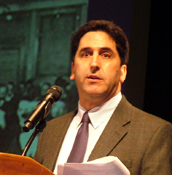
Bruce Bachenheimer is a Clinical Professor of Management and Director of the Entrepreneurship Lab at Pace University. He teaches undergraduate and graduate courses, primarily in the areas of entrepreneurship, management, and strategy. He is also the creator and organizer of the annual Pace Pitch Contest and Pace Business Plan Competition. Mr. Bachenheimer is a member of the Board and past Chair of the New York City Chapter of the MIT Enterprise Forum and has served on the organization’s Global Board. He serves on the Board of Directors & Advisors of LeadAmerica and has served as a consultant to governmental organizations and a variety of new ventures. He has been widely quoted in a variety of domestic and international publications and interviewed on radio and television
Accern
AliveInside
HGNT
Project Novaux
SheerStock
STRIP
The Inteview Master
Accern
Executive Summary
Accern is a quantitative content detection platform tailored for institutional investors. We help our users detect events that could affect their equities before they arise in the mainstream media channels. By doing so, Accern have put institutional investors in a unique position to make strategic investment moves before the crowd and significantly minimize risks on their current holdings. Institutional investors who obtain risk intelligence one second earlier than the crowd can save millions. Our mission is to be able to supply institutional investors with event alerts systematically as they happen in real-time, not after they’re reported. By utilizing local bloggers and journalist across the web along with common individuals on microblogging sites, we will be able to identify real-time event alerts as they happen. Anyone with a phone and internet access can post an event taking place near them before official reporters have gotten to the scene. The business model for this software will be a monthly subscription per seat with a one year contract. The market size for institutional investors dealing with equities and risk management is around 1.5 million seats. Our software will be converted into a small widget that can be placed at the side of our users screen and can be expandable with additional analytics. In this way, there is no learning curve or hard installation which saves both parties time and resources. The great thing about this software is that it’s very flexible in any verticals in the market. In further expansion, we plan to supply this software to government agencies where they can be on the alert for major events as they happen and act accordingly to save even more lives. Our largest direct competitor is a startup named DataMinr. They were the first intelligence detection startup to target institutional investors successfully. Currently, DataMinr is at $50M in Series B Funding and expanding into various verticals such as Finance, Government, and News Publishing. Accern’s founding team is consisted of Kumesh Aroomoogan – Pace University, BBA in Public Accounting and Anshul Vikram Pandey – New York University, PhD in Big Data Analysis. Systematically detecting quick actionable intelligences for institutional investors to act on by utilizing online content publishing is just the beginning.
Biographies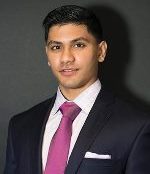
Kumesh is currently a senior at Pace University majoring in Public Accounting. He is the Co-founder and CEO of Accern, a quantitative event detection startup geared towards institutional investors. Kumesh had previously worked in corporate environments such as Citigroup, SIFMA, and Ford Foundation and held titles such as financial analyst and general accountant. While studying at Pace University, Kumesh had co-founded various profitable entrepreneurial ventures such as BrandingScholars, Auxral, and X|Fitness.

Anshul is currently a 2nd year PhD student at New York University studying Big Data Analysis. He is also the Co-founder, Lead Developer, and Data Scientist of Accern. Anshul had previously worked at Deloitte as a technology consultant, various research data labs as a research assistant, and a developer for Salesforce. During his studies, he had co-founded various entrepreneurial ventures as well. He sold two of his ventures; a robotic ventures to a large toy company, and an online data venture to the government in India.
Alive Inside
Executive Summary
In this era of technology, it is important for everyone to have some degree of digital literacy. However, in the United States alone, we have a large number of senior citizens that do not know how to communicate and survive in this world run by technology. In addition, there is an increasing number of senior citizens that suffer and die with some form of dementia and Alzheimer’sDisease (AD). According to the Alzheimer’s Association, more than 5 million Americans are living with AD and is the 6th leading cause of death in the United States. Research has shown that the subconscious and minds of this often forgotten population can be stimulated with technology as evidence with music and memory programs. Therefore, it is important to be able to combine advancement in computer science and technology to design and develop products that can improve the quality of life of many older adults, as well as their caregivers, especially those suffering from memory loss, dementia, and AD.
The goal of the team is to develop mobile applications for Android and iOS devices that will be utilized by dementia and Alzheimer’s patients. A mobile app called Alive Inside will stimulate their memory through music of their youth, special life moments, and hence improve their quality of life and hopefully create an improved daily demeanor which makes it meaningful to caregivers as well.
This personalized music streaming app is based on the award-winning documentary Alive Inside that studies the effect of music on seniors’ subconscious. Alive Inside app is different from other music app because it offers the user a personalized music listening list based on their personal lives. The mobile app will be offered for 99 cents to individual users. However, to account for maintenance and update costs, the team intends to associate with hospitals and nursing homes. In the United States alone, there are 16000 nursing homes with 1.6 million occupants. The team will partner with nursing homes where every nursing home that wishes to provide our app to their residents can contribute $100 for app support.
Biographies
Xavier Carlson is a full-time student at Pace University studying in the 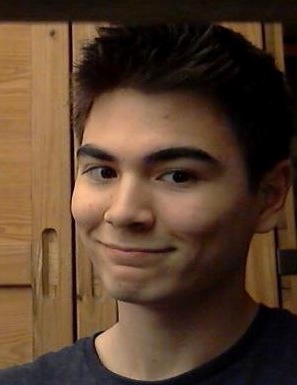 Seidenberg School of Computer Science and Information Systems. His goal is to earn a Bachelor of Science in Computer Science. Xavier currently works part-time at his University's tutoring center, tutoring a range of subjects from Computer Science, Computer Information Systems and Mathematics. He spends his free time exploring programming languages such as Java, C, Ruby Python, and Javascript. While he has no professional experience, he is currently a prospective intern for Tudor Investment Corporation and will be interning as a Software Developer in Tudor's IT Customer Services and Support department in the Summer of 2014. He is an aspiring Software Engineer and hopes to learn as much as he can during his college years to reach his goals.
Seidenberg School of Computer Science and Information Systems. His goal is to earn a Bachelor of Science in Computer Science. Xavier currently works part-time at his University's tutoring center, tutoring a range of subjects from Computer Science, Computer Information Systems and Mathematics. He spends his free time exploring programming languages such as Java, C, Ruby Python, and Javascript. While he has no professional experience, he is currently a prospective intern for Tudor Investment Corporation and will be interning as a Software Developer in Tudor's IT Customer Services and Support department in the Summer of 2014. He is an aspiring Software Engineer and hopes to learn as much as he can during his college years to reach his goals.
Stefan Howansky currently is a full-time student at Pace University. He is currently 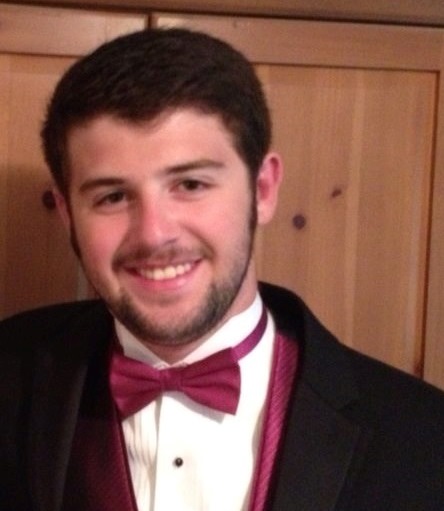 enrolled in the Seidenberg School of Computer Science and Information Systems in hopes to obtain his Bachelor of Science degree in Computer Science. He spends the majority of his free time learning about the Android mobile operating system as well as training Brazilian Jiu Jitsu. Stefan currently works part time at Education Media. This job allows him to become more acquainted to the hardware aspects of computers. Stefan aspires to become a software engineer for Google or become an independent mobile application developer. His love for computers grows daily.
enrolled in the Seidenberg School of Computer Science and Information Systems in hopes to obtain his Bachelor of Science degree in Computer Science. He spends the majority of his free time learning about the Android mobile operating system as well as training Brazilian Jiu Jitsu. Stefan currently works part time at Education Media. This job allows him to become more acquainted to the hardware aspects of computers. Stefan aspires to become a software engineer for Google or become an independent mobile application developer. His love for computers grows daily.
Martine Nezerwa is a full time graduate student at Pace University Seidenberg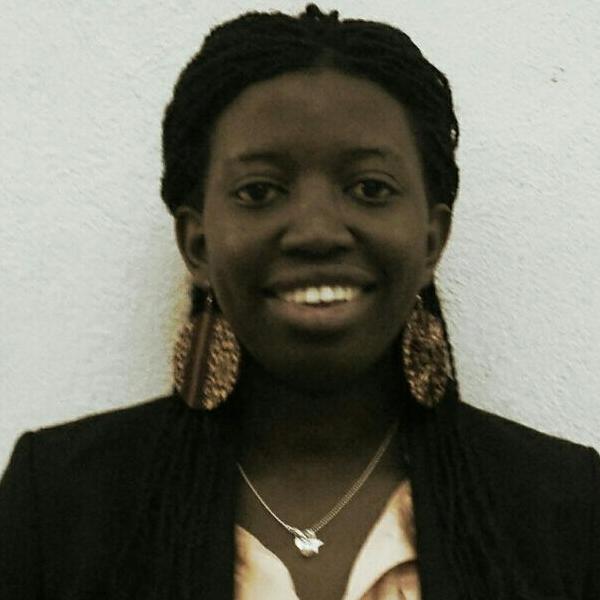 School of Computer Science and Information Systems pursuing her masters degree in Telecommunications and Network systems. She is set to graduate in 2015. Since her childhood, she has been fascinated and interested with technology especially computer technologies. Aside from being a full-time student, she is also a Graduate Assistant working with the Information Technology and a student assistant at the Pace University English Language Institute. She is one of the co-founder of Rwandan’s for Water, a non-profit organization that drills water wells in rural areas in her country Rwanda. With an undergraduate degree in Computer Engineering, Martine’s career goal is work for telecommunication companies like Samsung, in Korea.
School of Computer Science and Information Systems pursuing her masters degree in Telecommunications and Network systems. She is set to graduate in 2015. Since her childhood, she has been fascinated and interested with technology especially computer technologies. Aside from being a full-time student, she is also a Graduate Assistant working with the Information Technology and a student assistant at the Pace University English Language Institute. She is one of the co-founder of Rwandan’s for Water, a non-profit organization that drills water wells in rural areas in her country Rwanda. With an undergraduate degree in Computer Engineering, Martine’s career goal is work for telecommunication companies like Samsung, in Korea.
Jacob G. Stahl is a full time student at Pace University on the New York City campus. 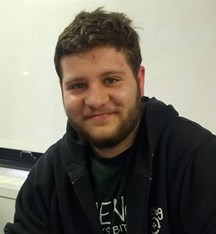 He is also currently enrolled in Seidenberg School of Computer Science and Information Systems in hopes to obtain a BS in Computer Science and a minor in mathematics in 2016. Mr. Stahl is currently working for a medical software company as a support engineer and aspires to be head programmer. He has been using computers since he was 4 years old. Jacob’s goal is to work at Valve Systems and become a video game designer. In his free time, Jacob likes tinkering with robots.
He is also currently enrolled in Seidenberg School of Computer Science and Information Systems in hopes to obtain a BS in Computer Science and a minor in mathematics in 2016. Mr. Stahl is currently working for a medical software company as a support engineer and aspires to be head programmer. He has been using computers since he was 4 years old. Jacob’s goal is to work at Valve Systems and become a video game designer. In his free time, Jacob likes tinkering with robots.
Jake Terranova is currently a student enrolled in Pace University's Seidenberg school 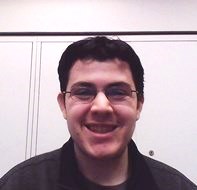 of Computer Science and Information Systems. He hopes to attain his Bachelor of Science degree in 2017, and eventually put his degree towards software or game development. Currently, he spends his free time learning about various programming languages and how he can use them in his own projects. At the moment, he focuses primarily on learning about Java, C and the android SDK to help his team further develop their app. On top of this, he also works at Educational Media which allows for him to have a more firm grasp on the hardware side of things.
of Computer Science and Information Systems. He hopes to attain his Bachelor of Science degree in 2017, and eventually put his degree towards software or game development. Currently, he spends his free time learning about various programming languages and how he can use them in his own projects. At the moment, he focuses primarily on learning about Java, C and the android SDK to help his team further develop their app. On top of this, he also works at Educational Media which allows for him to have a more firm grasp on the hardware side of things.
Keith Wright is a full-time student studying at Pace University’s Seidenberg School of 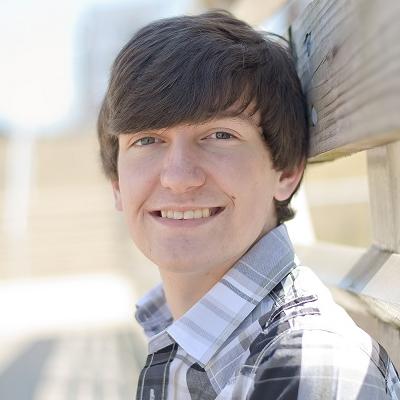 Computer Science and Information Systems with the goal of obtaining a Master’s degree in Computer Science. Keith currently works part-time in Pace University’s User Services department performing web and graphic design services. In addition to being an IEEEand ACMmember, Keith is a registered member and developer with Microsoft. Prior to enrolling at Pace, Keith previously worked with international missions as well as volunteering at local, non-profit organizations performing web design and technology training.
Computer Science and Information Systems with the goal of obtaining a Master’s degree in Computer Science. Keith currently works part-time in Pace University’s User Services department performing web and graphic design services. In addition to being an IEEEand ACMmember, Keith is a registered member and developer with Microsoft. Prior to enrolling at Pace, Keith previously worked with international missions as well as volunteering at local, non-profit organizations performing web design and technology training.
HGNT
Executive Summary
HydroGeneratioNexTechnologies (HGNT) was initially formed in 2013 as a project by current CEO, and Founder, Taylor Vogt. Once Mr. Vogt formulated the idea during his undergraduate career he assembled a small group of people to build on his initiative; students, faculty and community members.
The goal of the company is to completely redefine what it means to have a wastewater treatment system. We prefer to refer to the entire procedure as a sewer recovery processing network (SRPN), because we don’t see any reason to think of the effluent mixed water as anything but a resource which needs to be properly utilized. We need alternative, carbon-less fuels to power our vehicles. Hydrogen is a gas that can power vehicles through combustion or fuel cells without producing greenhouse gases. Through electrolysis, a mechanical-chemical process of using electrical currents to split water molecules, we can produce oxygen and hydrogen gasses. Usually hydrogen gas is produced from hydroelectric dams, where they have electricity and water. The problem is that hydrogen is too light to run through a pipeline and is too disparate to pressurize in a truck in mass. The issue is creating hydrogen in bulk for metropolitan epicenters.
We have a tremendous amount of water underneath our feet. We have electricity in our cities.
We can electrolyze sewer water. Sewer water is looked at as waste. It is discarded; kept under our feet so it is out of view. With sewers running the gambit of cities we can use electrolyzers to create hydrogen on site with that water; addressing the problem of otherwise needing to transport the hydrogen.
We can make cities into their own fuel production plants.
We prefer an “offensive” approach to wastewater systems: mechanically separate the biosolids at the source of input from the water and then move them to anaerobic digestion units. Breaking down organic material in the absence of oxygen, anaerobic microbes produce methane gas reducing the volume of biosolids. We can trap the methane to produce electricity cheaply for the immediate area. The end product of the digestion is ‘digestate’; a potent fertilizer. The hydrogen, oxygen, methane and digestate can all be sold or utilized on site.
We want to redesign every sewer system but will start in the United States, where the infrastructure is in need of redesign and risks complete failure. Over the next 20 years it will cost more than $600 billion to restore underground piping. Old, breaking pipes waste 1.7 trillion gallons or $2.8 billion every year. We believe our approach can provide long term sustainability for wastewater treatment, as it requires only replacing modules and parts as opposed to constructing new pipes or lines. Our SRPN will be cheaper and more resilient than traditional treatment practices, but those methods can always provide redundancy for our units.
We would like to start in cities around the United States where hydrogen refueling infrastructure already exists. Our aim is to form public-private partnerships with municipalities to provide them a service, in return for their expertise and construction capabilities. There are about 30 stations across the country. This approach is not proprietary to one city or even one nation. We have the ability to revolutionize sewer infrastructure around the world.
Biography
Taylor Vogt is a recent graduate of Pace University in Pleasantville, New York. He was awarded a Bachelor of Arts in Political Science and International Relations with Honors and during his time was acknowledged a minored in Environmental Studies. He graduated in December 2013. He is 23 years old. He grew up Croton-on-Hudson, New York. While attending Pace University Mr. Vogt was a member of the university-wide sustainability committee since its inception. Mr. Vogt won a merit award from IBM following his participation in an international online dialogue called the Smarter Planet University Jam. Subsequently he went on to found and foster the IBM Students for a Smarter Planet; the collegiate outreach network for the Smarter Planet campaign. He worked for a clean-tech start-up known as Turning Earth LLC during his freshman year. For his efforts in environmental activities and entrepreneurial endeavors Mr. Vogt was given a piece in Westchester Magazine’s feature ’22 People To Watch’ with the header ‘The Environment’s Savior’.
Project Novaux
Executive Summary
Novaux is creating a virtual currency POS system that will improve current point of sale software and the technology associated with it. the idea behind Novaux’s product was born out of the complaints of small business owners dealing with the expensive and steep learning curves associated with traditional POS systems with virtual currency implementation. Our goal is to create new POS systems that will reduce the learning curve while still being creating value for small businesses. The product will initially target the food and beverage industry with the goal of eventually expanding into other markets. Software will be distributed through the app stores, with point of sale systems and technical support sold as a compliment to that software.
The business model is “freemium” based with fees recurring monthly or annually for premium and developer features- the latter at a discount to the former. Advanced features including business analytics tools and dedicated customer support are available to customers willing to pay a slight premium for them. Novaux’s goal is to create an easier and more efficient check out process for restaurants at an affordable price. The overall emphasis is ease of use and efficiency: the point of sale system will monitor the establishment's finances and track how well the business is doing.
The software and point of sale system will be tested in third party restaurants. We have partnered with over 15 restaurants to perform beta testing. Feedback will be collected from waiters, kitchen operators, and managers on the overall ability and usefulness of Novaux’s software and point of sale system. Changes will be made to the software and point of sale system based on the feedback received with the goal of improving user friendliness and overall efficiency in a real food and beverage establishment.
Novaux will begin its marketing push in New York City, a market with 22,000 food and beverage establishments that are potential customers. A sizeable team of traveling salesmen will be hired to pitch the software and point of sale systems to businesses throughout the city. Compensation for these salespeople will be commission based.
Our goal is to have the software available in the general market five months after the company is founded. Novaux has set goals of 5,000 subscribers by the end of the first year with and 15,000 by the end of the second. Conservative estimates of $300 per subscriber will put our revenue at $750,000 in revenue for the first year and $4,500,000 the second year if these targets Software development for Novaux will require a team of 4 mobile developers, 2 designers, and 2 website developers. The initial length of time to create the applications is estimated at 4 months with at a cost of $120,000 in for salaries, rent, and other startup expenses. Initial funding will come from the company’s founders with additional investment sought from venture capital angel investors, and/or private funding.
Biography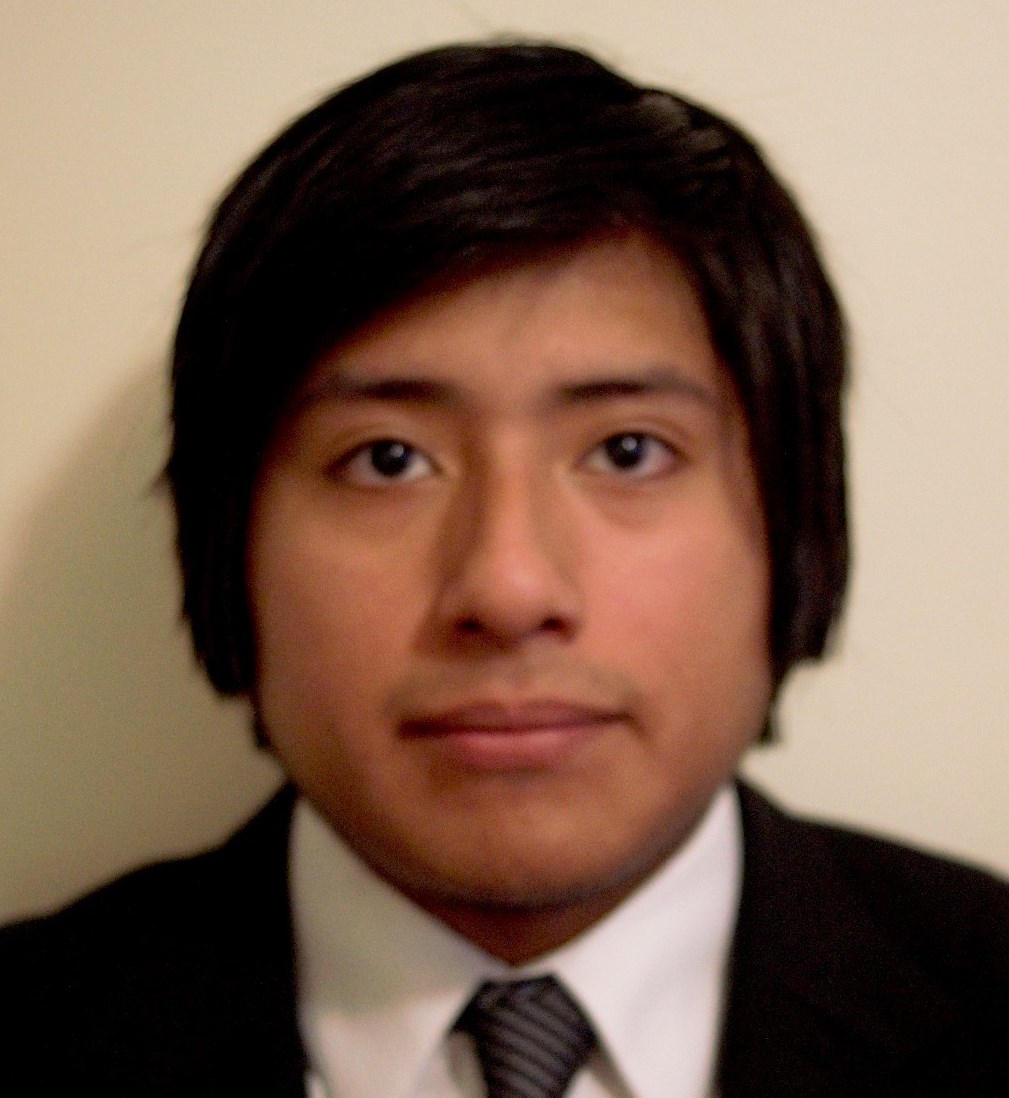
My name is Javier Dutan, I am a Senior in the Lubin School of Business at Pace University. My major is Management with a concentration in Entrepreneurship with an expected graduation date of May 2014. I have experience in many different fields ranging from Photography, Web Design, Marketing, and Financial Analytics.
I have worked in startups such as Applico Inc. that is now the market leader in its mobile development field. I have worked in financial analytics with Cians Analytics and have learned a great deal of business to business communication as well as managing a team overseas. My marketing experience with business to consumer has come from working with Apple and its award winning marketing team. My ambition to target an obstacle in the restaurant industry stems from my experience with restaurants. I grew up with restaurants as part of my childhood. I have seen my parent’s small restaurant slowly evolve through market changes, expansion, and innovation. I inherited my parents drive to succeed and as a result I would like to create my own success through an entrepreneurial endeavor.
SheerStock
Executive Summary
SheerStock is a convenient monthly subscription service for women that delivers a variety of hosiery products, such as tights, stockings, and thigh-highs. SheerStock will offer a variety of styles, brands, colors, patterns, prints, and sizes to tailor to all women. The goal of SheerStock is to provide the customer with multiple pairs of legwear each month that are appropriate for a variety of occasions and will save the customer from “making the trip if they’ve found a rip.”
First, customers will fill out a brief style profile, outlining their personal fashion needs and preferences. For example, a customer can indicate if they primarily wear hosiery in a professional environment or as a fashion accessory. Next, they will specify their size and any features they desire, such as control top or open-toed varieties. This way, we can create a better assortment of hosiery each month for our customers. Lastly, members will then receive a personalized package to meet their needs and preferences containing products from renowned brands, such as Hanes and L’eggs, and other well-known designers. Our goal is to provide the customer with essential hosiery products and introduce subscribers to the latest styles and trends.
SheerStock supports the professional advancement of underprivileged women by donating hosiery to women's empowerment organizations with each new subscriber. These trusted organizations are committed to providing career development tools and support networks that help women achieve their life goals and become financially stable.With SheerStock, we remind the customer that these organizations and women need support as they truly need these products. SheerStock ultimately values the empowerment of women, the goal that remains at the forefront of each stocking delivery.
Currently, subscription commerce is growing in the sector of beauty discovery. Most notably, Birchbox, the leading beauty sample subscription company, has sold over 5 million boxes to 400,000 subscribers since the company’s inception in 2010. The subscription business model has also proven itself effective in a disposable goods market. The company Dollar Shave Club provides subscribers with a monthly delivery of razor blades each month. Dollar Shave Club gained popularity in March 2012 when a promotional video went viral. Since then, the company has scaled to about 330,000 subscribers who purchase razors on a monthly or bi-monthly basis. There is a market for hosiery; at some point in the product lifecycle, stockings rip, tear, snag, and need to be replaced. SheerStock aims to disrupt the hosiery market and become the brand leader in subscription hosiery.
Biography
Paige Cecchi is currently a junior, B.S. Business Economics student at Pace University. Throughout her college experience, Paige has taken on leadership positions within the Economics Society on campus and expanded her network to include prominent alumni and likeminded motivated students. She has fostered an entrepreneurial spirit from a young age with the goal of starting her own business.
Paige is now focused on launching her company, SheerStock, a monthly subscription hosiery service. After many unpleasant experiences shopping for hosiery products in drug stores, Paige thought of a way to make buying hosiery online easy, convenient, and reliable, as these products are regularly disposable. Along the way, Paige realized organizations that provide professional clothing to underprivileged women were lacking new hosiery products to supply to their members. With both efforts in mind, Paige plans on launching SheerStock this May.
STRIP
Executive Summary
The company name STRIP encapsulates the product itself - this is a small, convenient, and disposable strip of paper with a chemical reaction indicator at the end, specific for the monosodium glutamate (MSG) amino acid derivative, glutamic acid. This product allows you to test for the presence of MSG, a commonly used flavor enhancer, with just a swipe on or through your food. Like some drugs, MSG is an excitotoxin, and can your cells to the point of damage or deterioration. According to the FDA, excessive intake of MSG has been linked to triggering or worsening of learning disabilities, Alzheimer’s disease, Parkinson’s disease, and ALS, mainly through the inflammatory reaction body cells have to high MSG concentrations. Even though these detrimental properties are known, MSG is only loosely regulated in the US and is often not regulated at all in other countries. With the product STRIP, you will be able to easily test for what food products contain MSG, as well as MSG byproducts, because the indicator STRIP is designed to be sensitive for the amino acid glutamic acid, as well as its related contaminates. In order to eat clean, you have to strip your food down to its smallest components, and this product will allow you to do just that.
Biography 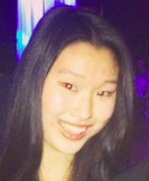
Jennifer Li is a junior at Pace Univerity with a major in Business Economics and a minor in mathematics. She is fluent in both Chinese (Mandarin) and English. She believes that healthy living should be made effortless, efficient and simple, and thus the product STRIP was born.
The Interview Master
Executive Summary
Getting a job interview is hard enough, which is why it is important to make the most of every opportunity. Interview Master is an online portal which gives job seekers the upper hand by connecting them with relevant and experienced interviewers in their field. Interviewees are able to get valuable feedback and fine tune their interview technique, which will improve their chance of landing the job of their dreams in an extremely competitive environment.
Interviewers, called mentors, post their credentials on the online platform. After an interviewee selects a mentor in their field of expertise, a mock interview via Skype is arranged. Prior to the interview clients are allowed access to a set of resources and case studies to allow them to brush up on their skills.
During an interview session, mentors analyze the resume, ask challenging questions on a range of relevant subjects, and takes notes about the interviewees’ answers and overall performance. Afterwards the mentor provides unbiased detailed feedback. The whole interview is digitally recorded for easy future referencing.
Eligible mentors include human resource managers, recruiters, entrepreneurs/CEO’s, and any other individual with experience interviewing and hiring job candidates. All mentors are verified by Interview Master and a rating system adds increased accountability. Mentors post their credentials, and set timed sessions in accordance to their schedule and prices. Interview Master takes a 20% fee.
We envision most mentors will be employed full time and will use our site as an avenue to supplement their income. However, retirees, experts, individual interview coaches/trainers and part time employees will also benefit greatly from the platform, which will result in a diverse range of high quality mentors.
Our target market is recent college graduates, the long-term unemployed, and anyone seeking a job who has difficulty advancing past the interview stage due to a lack of interview experience/practice and confidence. According to the New York Times, long-term joblessness is up 213% since 2007 and the Federal Reserve Bank of San Francisco states newly unemployed workers have about a 20-30% percent chance of finding a new job, that chance drops to 10% after six months.
The Competition consists ofwebsites which offer generic mock interview preparation and coaching online, with prices starting at $80 per session, and some university career services departments. However, interviewers are not specific experts in any one field and cannot provide a realistic interview scenario. Furthermore, university career services are limited to students/alumni and oftentimes depend on a small amount of volunteers to execute the interviews resulting in long wait times.
Opportunity/Differentiator
Interview Master will be a collective of part time mentors who are eager to supplement their income and help people at the same time. This will allow interviewees to find a mentor in their field of expertise at an affordable price and not be paired with a generic Human Resource Manager in an unrelated field.
Biographies 
Camille Hugh holds a MBA in marketing management from Pace University (June 2013) and is an author / serial entrepreneur. She has owned and operated companies in the real estate industry, wedding industry and publishing industry.

Patrick Roche holds a Masters in Architecture from University College Dublin Graduation year 2011 . He has worked throughout the world in many botique design studios and contributed research and graphic design to the second edition of Sustainable Healthcare Architecture published by Wiley in 2013.
First Prize
A $1,000 cash prize will be awarded to the winner.
Second Prize
A $500 cash prize will be awarded to the second place.
Third Prize
A $250 cash prize will be awarded to the third place.
Pace University reserves the right to disqualify, at its sole discretion, any individual or team from the competition at any time (before or after the Pitch Contest or the award of any prize) for any reason. Reasons for disqualification may include, but are not limited to, misrepresentations in the application process, plagiarism, infringement of the intellectual property of others, and any failure to comply with the rules of the competition. Disqualified individuals or teams shall forfeit any and all prizes awarded to them.
Previous Pitch Contests
|
Ninth Annual Pace Pitch Contest (April 18th, 2013)
|
![[Pitch Contest Brochure]](/lubin/sites/pace.edu.lubin/files/WFO/Images/pitch/2014/Pitch%20Cover.jpg) Click to download the full Official Program for the Tenth Annual Pace Pitch Contest (PDF). |
About the Contest
The Pace Pitch Contest is based on the Elevator Pitch concept, popular in the venture capital community. It is an extremely concise presentation of an entrepreneur's idea, business model, marketing strategy, competitive analysis, and financial plan, which is delivered to potential investors. The premise is that it could be made in a few minutes, should the entrepreneur spot a potential investor on an elevator and have the opportunity to pitch their idea during the brief ride.
Each Finalist will have exactly three minutes to pitch their new venture idea to a distinguished panel of judges and an enthusiastic audience. In addition to broad participation at Pace, we have been pleased to welcome student competitors from a number of other universities, including Columbia, Harvard, MIT, NYU, Princeton, and Stanford.
For additional information, please contact:
Bruce Bachenheimer,
Bruce Bachenheimer,
Clinical Professor of Management and Director, The Entrepreneurship Lab
Tel: (212) 618-6663
Fax: (212) 618-6664
E-mail: bbachenheimer@pace.edu
Web: webpage.pace.edu/bbachenheimer
Address: Pace University
Lubin School of Business
Department of Management, Room 342
163 William Street
New York, NY 10038
Nikhil Kalyankar,
Associate Director, The Entrepreneurship Lab
Tel: (212) 618-6667
E-mail: nkalyankar@pace.edu
Address: Pace University
The Entrepreneurship Lab
163 William Street, 3rd Floor
New York, NY 10038
![[Pace Pitch Contest]](http://appsrv.pace.edu/Lubin/images/pitchcontest/PacePitchContest.jpg)




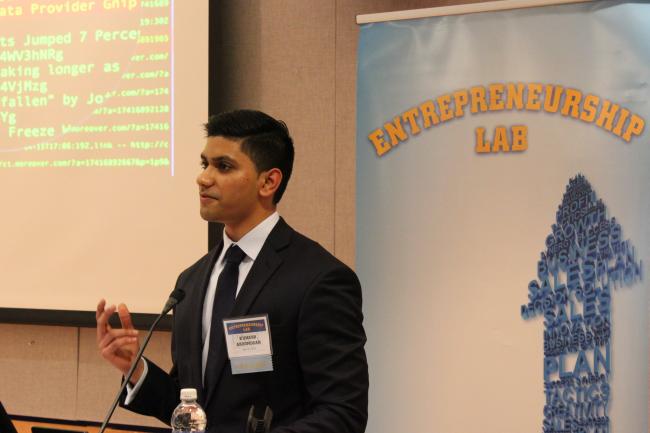

![[Join our mailing list]](/lubin/sites/pace.edu.lubin/files/WFO/Images/entrepreneurship/JoinOurMailingList.jpg)
 Visit us on Facebook
Visit us on Facebook



